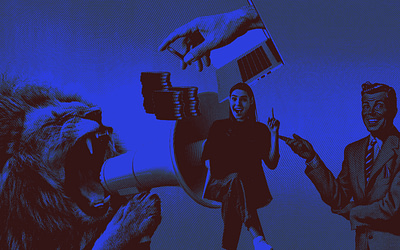This experience emanating from a friendship relationship-based first on knowledge, and later on love, has served as an example in the world of neuromarketing to design a strategy designed to intrinsically unite a brand with its client. Out of this study, what is known today as Lovemarks was born.
Lovemarks
Kevin Roberts, an expert in advertising and marketing, who currently directs Saatchi & Saatchi, one of the largest advertising agencies in the world, made the concept of Lovemarks, love, and brand fashionable in 2004, based on studies of Emotional Marketing that through The advancement in neuroscience and its application in neuromarketing, confirmed that emotions play a much more important role than previously thought in relation to purchasing decision-making.
The capacity of a brand
A brand is the ability of a product to differentiate itself from another by means of tangible or intangible qualities, and it is these that, thorough knowledge on the part of consumers, capture the attention of their potential customers through a product-consumer relationship, starting with knowledge, passing through desire, until reaching a deep dependence on the brand, managing to turn customers into true fans, or so-called evangelical customers.
To reach the client’s heart through their emotions there are the same three steps that unite people in a special friendship relationship: Mystery, sensuality, and intimacy:
The mystery is the history of the brand, everything that is unknown, what is behind it, in part its biography that does not stop being interesting, since there are the secrets of its success and its persuasion laboratory.
Sensuality is the brand’s ability to stimulate each of our senses, that is where the desire for possession is born.
Intimacy is the ability of a brand to maintain an intimate relationship with its customer, based on commitment, empathy, and passion.
Coexistence relationship
Brands and their products tend to satisfy a need, and from such satisfaction comes knowledge, the more knowledge the more trust, and the more trust the more dependence, this activates love and respect for a certain brand; even more so when this brand has always been within reach, living together in experiences throughout life, this is the circle of true friendship between a brand and its customers.
The love of a brand for a certain product becomes greater and unconditional when it is initially perceived as an unattainable brand.
Kevin Roberts has already ruled that “what moves human beings is emotion, not reason.” Therefore, literally, Lovemarks is that brand that we love.
Customer and brand can become an unbreakable union when it is sustained in trust.
Today more personalized brands are perceived through some of their products that are increasingly visible on different social networks. The great business of advertising is creating needs, apart from updating those that already exist, that is why it is imperative to know how to read by below appearances.






